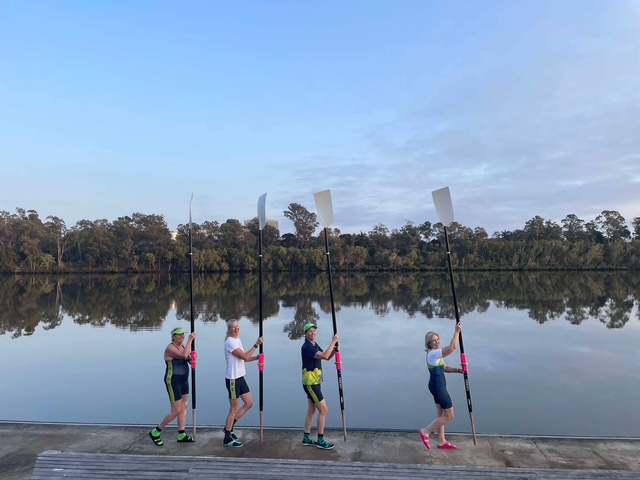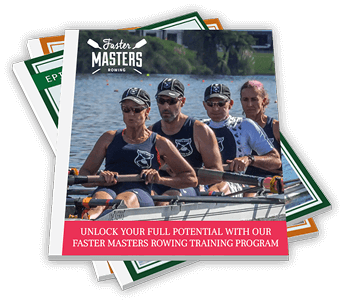Coaching Mixed-Gender Masters Rowing Groups is one tool coaches can use to improve the goodwill and common bonds among members. Rowing has a strong reputation as a sport that enables friendships and we know many masters value this aspect of a rowing club.
Unlike nearly all other rowing, masters is nearly always a mixed gender group training together. This presents challenges because of physique - people are different heights, weights and of differing strength.
As a result, many groups choose to train in sculling boats because it is easier to align a crew when each person has two oars, rather than sweep rowing where they have one oar each.
Aside from the training fitness we gain from rowing, community is a major reason why adults choose rowing as their sport of choice. We make friends, real, lifelong friendships with people we meet at the rowing club.

Later in life it is harder to make friendships - there are many reasons for this which I don’t want to dwell on. Today let’s focus on how rowing clubs can facilitate the growth of community and friendships. Because there are many, many reasons why people choose this sport and so it’s incumbent on clubs to understand their membership’s motivations so that the club committee/board can deliver experiences which keeps their members returning to the club each season.
Match the workout to the social
When organising lineups and workouts, club organisers should be planning in three month blocks. What are the events you have on the calendar which will appeal to your members?
Some will surely want to race - and so crew lineups for single sex and mixed crews who want to race together will suit one constituency of your membership.
Socialising after workouts will also suit these people - can you arrange to have a coffee or breakfast together at weekends after your row? Some can use a club room with a kitchen, provide a coffee machine and a toaster so that everyone can get some food, sit down and chat and pay a small sum for the pleasure. Other clubs will prefer to go out to a local cafe where there’s sufficient seating to allow a large table to accommodate a group of rowers in sweaty kit.
How about organising a scrimmage? This is an inter-club meeting with another masters group in your locale. Arrange to go and train at their boathouse one weekend and socialise together afterwards. If you can do crews which mix up the two clubs, all the better. And coffee too!
Jamming sessions are a way of mixing up groups of different abilities. Say you have a novice group and a more experienced group - why not “jam” together [like a band] and put the two groups together for one workout every so often? The less experienced learn from the more experienced and they get to know each other as well.
Social activities like pot luck dinners, picnics, weekends away to row at another club, a coastal rowing adventure, a rowing vacation overseas, or a camp are other ways to build community. You learn a lot about people by spending time together.
New joiners
When someone new joins the club do you have a person who takes the lead on welcoming them, introducing them to the group and ensuring that they come back for a second time? A simple text message can be enough to encourage them to return.
Your learn to row class is another great way to build community. I get the prior learn to row class to come and be helpers for the new learners. This builds their confidence in the skills they’ve learned when they see that they really do know quite a lot about the sport. It also enables you to have a buddy system for guidance and to use fewer coaches to run the session because you have more helpers.
Cliques kill masters clubs
If you have a clique of rowers who will only row with each other, beware. This is a major reason for a club shrinking, failing to recruit new members to replace those who leave and can become a downward spiral.
If you are too grand to row with other people, you probably shouldn’t be part of a masters rowing club.
Elite clubs do exist (frequently they are virtual ‘rolodex’ crews) and they’re a place for high performing masters athletes. But we all know that there is no way to expand membership, fund raise for new equipment and improve access to the sport with a shrinking membership. Even within an elite group there will be people with more and less experience and fitness - so there is always a need to row with people who are “less good” than yourself.
This is one of the key truisms that underly masters rowing. How does it apply in your situation?
Why are you here?
This is a great question to ask your membership. And the answers will tell you a lot about what the current members value about your club and what it provides its members.
Consider doing a membership survey regularly.... and look for the gaps between what you want to do and what the members appreciate and enjoy. Then you can focus your membership offer to close those gaps.
In summary: The focus learning points from this article are....
- Make the social match the workout
- Schedule non-rowing social activities
- Prevent the formation of cliques
- Jamming sessions, trips and scrimmages
- Second year novices teach LTR
Resources
- Digitize your rowing club management webinar
- Rowing time management podcast & checklist

